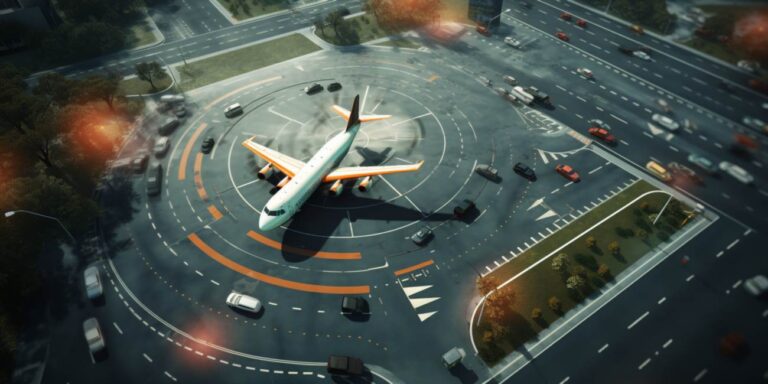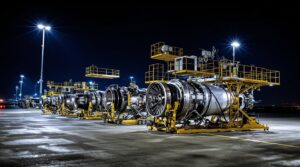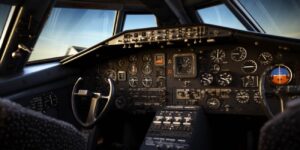Primarily, the implementation of aircraft-enforced speed limits is rooted in the necessity to ensure the safety of air travel. Just as roads have speed limits to prevent accidents, the aviation industry has its own set of regulations to mitigate potential risks in the vast expanse of the sky. These limits are meticulously defined to manage the complex choreography of planes sharing airspace, averting collisions and maintaining a harmonious flow.
Aircraft themselves are equipped with advanced avionic systems that allow for precise monitoring of their speed. The enforcement of speed limits relies on technologies like Radar and GPS, enabling aircraft to constantly communicate their velocities to air traffic control centers. This real-time data exchange ensures that deviations from designated speeds are promptly identified and addressed.
The aircraft-enforced speed limits are not arbitrary figures but are calculated based on various factors, including the type of aircraft, its weight, altitude, and prevailing weather conditions. These limits are essential for preventing turbulence-related incidents, especially during takeoff and landing, where adherence to specific speeds is critical for the aircraft’s stability.
One might wonder why aircraft-enforced speed limits are vital. Imagine the sky as a bustling highway with planes traveling in different directions, altitudes, and speeds. Without stringent speed regulations, chaos would ensue, leading to a heightened risk of mid-air collisions and other catastrophic events. The enforcement of speed limits acts as a safeguard, maintaining order and preventing potential disasters.
Interestingly, the role of aircraft in enforcing speed limits extends beyond their own compliance. They also contribute to ensuring that other aircraft in their vicinity adhere to the prescribed speeds. This collaborative effort is facilitated through advanced communication systems, allowing planes to relay speed-related information to nearby aircraft, fostering a collective commitment to safety.
It’s crucial to recognize that how aircraft enforce speed limits is not solely dependent on the technological prowess of individual planes. The overarching framework involves global aviation authorities, which establish and regulate these speed limits universally. International cooperation is paramount, ensuring that regardless of the airline or the country of origin, all aircraft follow standardized speed guidelines.
To illustrate the complexity of aircraft-enforced speed limits, consider a scenario where a plane is approaching a congested airspace. The air traffic control, armed with real-time speed data, can orchestrate precise maneuvers, such as altering altitude or routing, to optimize traffic flow and minimize the risk of congestion-induced issues.
Aircraft speed limit enforcement protecting lives through air patrols
Ensuring air safety is a paramount concern in the dynamic realm of aviation. One critical aspect of this safety net is the enforcement of aircraft speed limits, a measure designed not only to regulate air traffic but also to safeguard the lives of those who traverse the skies. In the vast expanse where aircraft roam, speed limit enforcement becomes a linchpin in averting potential disasters.
Imagine a scenario where aircraft, unbridled by any speed constraints, hurtle through the skies with reckless abandon. Such a situation could spell catastrophe, with the risk of mid-air collisions and other fatal incidents skyrocketing. Hence, the imposition of speed limits serves as a crucial mechanism to curtail these risks and maintain order in the airborne domain.
One of the primary methods employed for speed limit enforcement is through dedicated air patrols. These vigilant aerial units act as the guardians of the skies, ensuring that aircraft adhere to prescribed speed regulations. Equipped with advanced radar systems and sophisticated monitoring technologies, these patrols cover vast expanses, surveilling the airspace for any violations.
The use of air patrols adds a layer of deterrence, dissuading pilots from exceeding speed limits and reinforcing a culture of compliance. When a violation is detected, enforcement measures can be implemented promptly, preventing potential disasters before they unfold. The proactive nature of air patrols sets them apart as a vital tool in the aviation safety arsenal.
The impact of speed limit enforcement through air patrols extends beyond mere regulatory adherence. It plays a pivotal role in mitigating the environmental footprint of aviation. By maintaining optimal speeds, aircraft consume fuel more efficiently, reducing emissions and contributing to the global effort to combat climate change.
Table 1:
| Benefits of Aircraft Speed Limit Enforcement | Importance |
| Enhanced Safety | Crucial for preventing mid-air collisions and accidents |
| Environmental Impact | Contributes to fuel efficiency and reduced emissions |
| Regulatory Compliance | Ensures adherence to established speed limits |
As we delve into the intricacies of aircraft speed limit enforcement, it becomes evident that it is not merely a regulatory formality but a lifeline for air travel safety. The synergy between speed limits, air patrols, and regulatory compliance forms a formidable bulwark against potential airborne calamities, ensuring that the boundless skies remain a realm of secure and orderly travel.
Using plane mounted cameras to catch speeders on highways
Imagine a highway patrol system where police forces take to the skies, not in conventional helicopters, but in cutting-edge camera planes. This innovative approach to law enforcement combines the agility of aircraft with state-of-the-art radar technology, creating a formidable tool against speeding violations on our highways.
The concept of using aircraft equipped with high-resolution cameras for speed enforcement introduces a new dimension to traffic monitoring. These specialized camera planes soar above the roadways, their lenses focused on the flow of vehicles below. The advantage? A bird’s eye view that spans vast stretches of highway, making it nearly impossible for speeders to escape undetected.
Equipped with advanced radar systems, these police aircraft can accurately measure the speed of vehicles from the air. This integration of radar technology with aerial surveillance allows for swift and efficient enforcement of speed limits. The radar units onboard the camera planes can track multiple vehicles simultaneously, providing a comprehensive overview of the traffic situation.
One of the key benefits of employing camera planes for speed enforcement is the element of surprise. Traditional speed traps are static and predictable, giving drivers the opportunity to adjust their speed when approaching known enforcement areas. However, a police aircraft patrolling the highway can appear at any location, catching speeders off guard and discouraging reckless driving across the entire roadway.
The effectiveness of this approach lies not only in detection but also in deterrence. Knowing that a camera plane equipped with radar is actively monitoring the highway encourages drivers to adhere to speed limits, promoting safer road behavior. It serves as a constant reminder that the skies above are not just a sanctuary for birds but also a watchful eye for law enforcement.
While the use of camera planes for speed enforcement represents a leap forward in technology, it also raises questions about privacy and surveillance. Striking the right balance between public safety and individual privacy is crucial. Proper guidelines and regulations must be in place to ensure that these aerial surveillance tools are used responsibly and ethically.
Radar equipped aircraft identifying speeding drivers from the sky
Radar-equipped aircraft are revolutionizing the realm of traffic enforcement, taking it to new heights—quite literally. Picture a scenario where the sky serves as the patrol ground, and planes become the guardians of road safety. This innovative approach utilizes cutting-edge technology to identify and apprehend speeding drivers from the aerial vantage point.
Equipped with state-of-the-art radar systems, these airborne vehicles soar above the highway, scanning for violations with unmatched precision. The synergy of aviation and law enforcement introduces a dynamic element to the traditional concept of highway patrols. No longer confined to terrestrial limitations, the plane highway patrol takes traffic enforcement to new altitudes.
The core of this system lies in the advanced radar technology integrated into the aircraft. These radar systems, designed for aerial surveillance, can identify speeding drivers with exceptional accuracy. Through cutting-edge signal processing algorithms, the radar distinguishes between vehicles, assessing their speed and flagging potential violations.
Imagine a scene where a speeding vehicle on the highway becomes a blip on the radar screen of the patrolling aircraft. The enforcement team, miles above, tracks the offending vehicle, calculating its speed and recording the necessary details. This seamless coordination between technology and airborne personnel turns the vast expanse of the sky into an efficient zone for traffic enforcement.
The ramifications for speeding drivers are significant. No longer can they rely on evading ground-based patrols alone. The omnipresence of radar-equipped aircraft introduces an element of unpredictability. The skies become an additional dimension where adherence to speed limits is non-negotiable.
As the radar-equipped plane highway patrol identifies speeding drivers with precision, it facilitates a more proactive approach to law enforcement. Real-time data, relayed from the sky to ground units, allows for swift and targeted interception. This not only enhances the efficiency of traffic enforcement but also serves as a deterrent for potential violators.
Integrating these airborne patrols into the fabric of traffic enforcement introduces a paradigm shift. The combination of radar technology and aerial mobility transforms the traditional into the extraordinary. The sky, once a passive observer, now actively participates in ensuring the safety and compliance of highway users.






